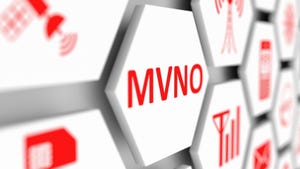Juniper drafted in for network upgrades on ASTRON’s astronomy telescope
Juniper Networks has signed a deal with Netherlands Institute for Radio Astronomy (ASTRON) to upgrade the networking kit on its LOFAR 2.0 (Low Frequency Array) telescope.
January 8, 2025

LOFAR is currently the largest radio telescope in the world operating at the lowest frequencies that can be observed from Earth, we’re told. The project will involve upgrading its core, access, WLAN and WAN network infrastructure.
The telescope uses a multipurpose sensor network, with a computing and network infrastructure that is designed to handle ‘extremely large’ data volumes at any one time. The upgrades will involve giving the telescope 800G capabilities to enable increased data processing scale, throughput speed and reliability using architecture that will connect across nine of ASTRON’s operating countries.
The upgrades will give ASTRON a factor 10 increase in the network bandwidth available at each LOFAR station, which will enable “access to all LOFAR antennae 24/7, a doubling of the simultaneous bandwidth for more efficient surveys, synchronised antennae to within nanosecond precision and an overall improvement to LOFAR’s sensitivity and accuracy,” states the release.
The sort of research Astron is engaged in includes the study of extra-solar planets, the earliest phases of galaxy evolution and monitoring space weather events.
"ASTRON is thrilled to expand the capabilities of the LOFAR telescope with Juniper Networks,” said Julian Kootstra, System and Network Engineer, ASTRON. “The upgrade to ASTRON’s network infrastructure will support invaluable research and significantly increase ASTRON’s operational capabilities."
Steven Blees, Enterprise Sales Director, Benelux at Juniper Networks added: "Juniper is honoured to support ASTRON with new technological advancements in radio astronomy with the LOFAR 2.0 telescope upgrade. Juniper’s AI-Native Networking portfolio, offering robust and reliable solutions, was the perfect fit for ASTRON and Juniper is excited to see what ASTRON’s research institute is able to achieve through this innovative project."
In other space flavoured telecoms news, yesterday Nokia announced its Lunar Surface Communication System (LSCS) has been integrated into Intuitive Machines IM-2 mission lander called Athena – the intention being that it will voyage to the lunar south pole region and deploy the first cellular network on the Moon.
The network uses the same 4G/LTE cellular technology used by devices on Earth, and modules have been installed in two lunar mobility vehicles. These will test new sensor instruments that could help find resources on the Moon, map the lunar surface and collect stereo imagery and environmental data, which would then be transmitted over the Nokia network to Athena and relayed back to Earth.
About the Author
You May Also Like










.png?width=300&auto=webp&quality=80&disable=upscale)


_1.jpg?width=300&auto=webp&quality=80&disable=upscale)